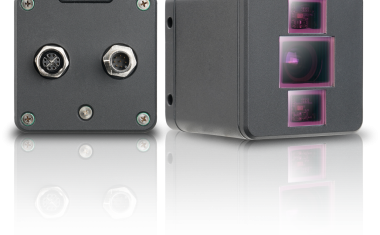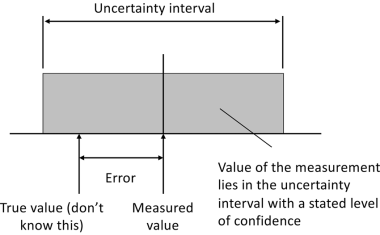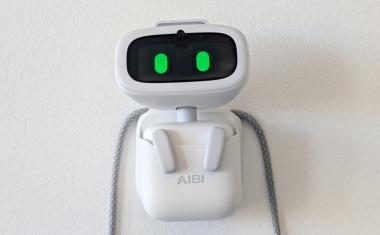Robots are no longer only found in the high-tech factories of large corporations. Medium-sized companies are also increasingly discovering their advantages - both in stationary applications with cobots and industrial robots as well as with autonomous mobile robots (AMRs). But what exactly are entrepreneurs in the SME sector interested in with regard to robotics, what solutions are available and what does the future hold?

Challenges and concerns of SMEs
Shortage of skilled labour
Entrepreneurs in the SME sector are increasingly confronted with a shortage of skilled labour. According to the Institute of the German Economy (IW), which is close to employers, companies could generate 49 billion euros more this year with a sufficient number of skilled workers at full capacity if the 570,000 vacancies could be filled. The lost production potential will already increase to 74 billion euros by 2027. Automation through robotics can help here, in addition to an improved integration policy and the expansion of further education and training in schools.
Costs and ROI
The acquisition costs for robots and automation technology can be high, so the choice of application and initial area of use is very important. Where do I have quality problems and a high error rate? Where do I have monotonous, dangerous and/or uneconomical workplace conditions? Where do weight and speed play a role?
Robotics offers the right answer to all of these questions if you focus on simple and straightforward applications when starting out and getting started with robotics. Unfortunately, the biggest mistakes are often made when making the right choice for a possible switch to robots at the start. Simplicity comes before complexity. If you take this into account, you can achieve an attractive return on investment (ROI) of less than two years thanks to the increased efficiency, the reduction in waste and the new technologies.
Fears and prejudices
Loss of jobs
A common prejudice against robotics is the supposed loss of jobs. Many employees fear that they will be replaced by robots. However, studies show that the introduction of robots often leads to a change in tasks rather than job losses. The aim should be for robots to take over monotonous tasks, while human workers can devote themselves to more complex tasks. The success of a smooth introduction therefore also depends on the involvement of the affected employees before the start of the project in order to allay precisely these fears. What's more, demographic change will mean that there will be a shortage of four to six million skilled workers in Germany by 2030, which makes this argument absurd.
Lack of knowledge
Many entrepreneurs fear that they do not have the necessary knowledge to implement robots successfully. But this is precisely the biggest change in robotics in recent years. All robot manufacturers and start-ups in the robotics sector have recognised that simple operation and commissioning by the user must be possible in the future in order to overcome this barrier to entry. This is why so-called no-code and low-code applications are on the rise, so that robotics and programming skills are no longer required. This applies in particular to simple and quick-to-implement applications, as already described as a recommendation.
Solutions and approaches
Flexibility through cobots and industrial robots
Cobots offer a flexible and cost-effective solution for medium-sized companies. They can be easily programmed and quickly integrated into existing production lines and work hand in hand with human colleagues as collaborative robots. This increases efficiency and reduces the workload of the employees concerned. A large number of manufacturers offer excellent solutions here.
But it doesn't always have to be a cobot. Depending on the application, more and more manufacturers and integrators are developing complete application cells for welding, palletising, machine loading and many other standard applications that are more or less plug & play ready for use on site. This is why it is so important to select the process to be automated in order to choose the right robot and partner.
Mobile robotics for logistics
Mobile autonomous robotics is also showing impressive results. Many logistics centres and industrial companies are already using autonomous mobile robots to manage stock levels and speed up deliveries to the production line. The advantages are obvious: they navigate independently through the warehouse, transport goods and thus relieve employees of physically strenuous tasks, increase productivity and reduce error rates. The various manufacturers offer fork-lift trucks, underfloor vehicles, tugger trains and also a combination of mobile robots with stationary cobots. Depending on the manufacturer, these can be used both indoors and outdoors or even in poor ground conditions.
Commissioning and safety
Planning and integration
When commissioning robots, there are some important points to bear in mind. Careful planning and a clear definition of tasks are essential. Employee training is also crucial to ensure smooth integration. The same applies to the aforementioned involvement of employees before the start of the project. Close cooperation with experienced integrators also ensures the success of robotics projects.
Safety
Safety is the top priority when implementing robots. Cobots are designed to stop immediately on contact with a human to prevent injuries, whereas industrial robots require safety fences and light barriers. CE certification, risk analysis and compliance with the relevant standards are essential here. The German Robotics Association with its safety specialists, the TÜV or the employers' liability insurance associations can provide support and information here.
Outlook and future
Robotics will continue to gain in importance in the coming years. The recently founded Robotics Institute Germany plays an important role in this. The aim of the institute is to promote the transfer of knowledge between research and practice and to support companies in the implementation of robotics solutions. With increasing networking and advances in artificial intelligence, robotics will become even more versatile and accessible.
However, new technologies such as humanoid robots, four-legged robots, drones and AI-supported programming using voice or gesture control will also continue to drive the use of robotics in industry. The new fields of application such as agricultural robotics, robotics in construction, in the military and also the enormous potential in service robotics have not yet really been taken into account here.
Author
Helmut Schmid, founder of HS Auxilium, and Chairman of the German Robotics Association











